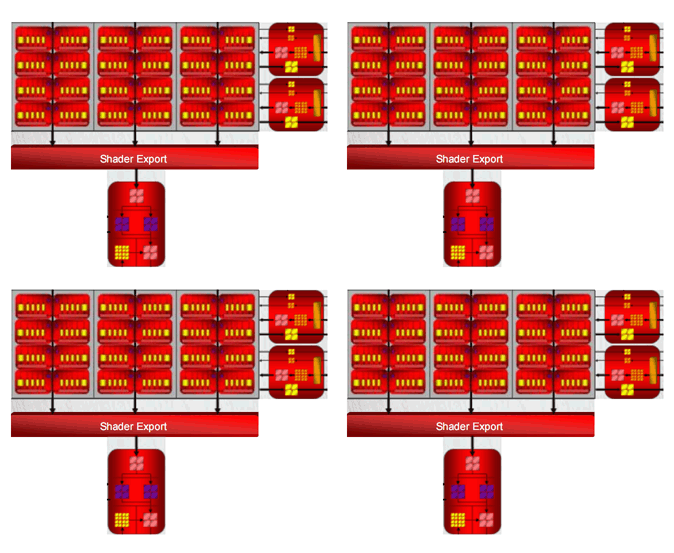Sound_Card
Regular
I did a possible configuration based on this rumour back in February:

In the past I've described it as 12 SIMDs. I dislike this idea because that's a lot of control overhead and results in relatively coarse-grained redundancy (60 redundant ALU lanes as compared with 20 in RV670). Alternatively, I suppose, it's possible to implement it as 4 SIMDs - each set of 96 SPs sharing a program counter. That would have 20 redundant ALU lanes - but now the issue is the batch size of 96...
This arrangement is the same type as seen inside R580, where each SIMD is 3 quad ALUs (12 pipes) sharing a single TMU.
So, as a 4 SIMD design I'm not unhappy. Still a bit dubious about it being a 3:1 ALU:TEX ratio, though.
Jawed
I know you say ATi likes to increase the ALU:TEX ratio, but I really don't see a problem with a 3:1 ratio when the ALU's are being increased by 50%!!! What is funny however is that your drawing ties almost exactly to what chiphell and others have been reporting. I strongly believed in 96 ALU's and 24 TMU's, but I may just be convinced into 96 and 32.
Last edited by a moderator:
